MARIANI’SVirtual
Gourmet
November
25, 2012
NEWSLETTER
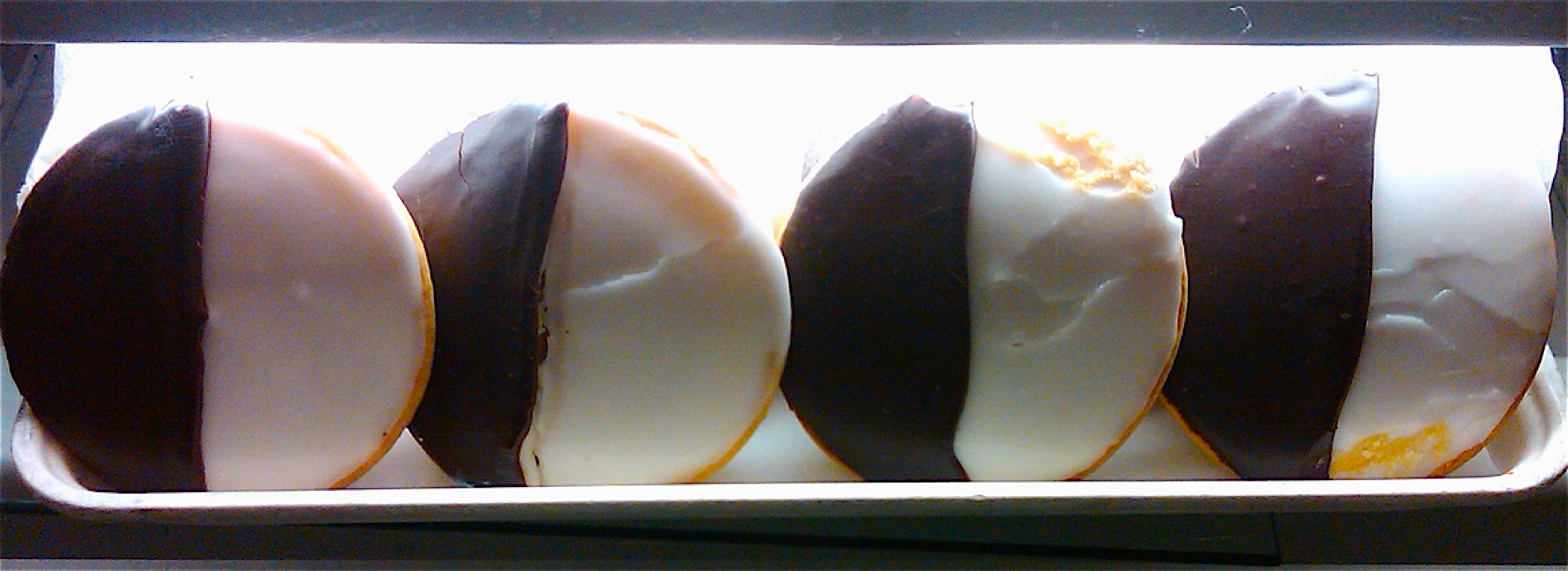
Black and White cookies,
NYC (2012)
Photo by John Mariani
❖❖❖
THIS WEEK
by John Mariani
NEW
YORK CORNER
OCEANA
by John
Mariani
❖❖❖
AND DRINK BOOKS
by John Mariani

The Fall season for publishers is really the pre-Christmas season when they expect to sell their best titles of the year and make the most money from them, a cheery idea when the whole book publishing biz is in such flux and under such pressure to innovate or cave in to Kindle. When it comes to food, drink and travel books, publishers usually go for their big names, and glossy gift books that inevitably find their way onto coffee tables, remainder tables or on the re-sell listings on Amazon. There are, however, some books that go in new directions or are just terrific to read. Here are several I'll find time to spend time with.
The
Country Cooking of Greece
by Diane Kochilas (Chronicle
Books, $50)--For a decade now, Diane Kochilas has
been the diva of Greek cooking, straddling both
Greece and NYC, and forever poking her nose into
Greek cooks' kitchens and her fingers into their
cooking pots. The result has been 15 book up
till now. The
Country 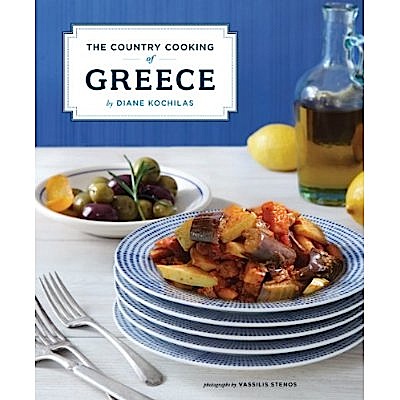 Cooking of Greece
is her masterpiece, a volume so thorough, so
affectionate, so engaging, that it is unlikely to
be surpassed for years or decades to come.
No recipe takes more than half a page or a page,
the ingredients are almost wholly available, and
her husband Vassilis Stenos' photographs will
cause hunger pangs page after page.
Something so simply as pistachio-crusted feta saganaki,
which takes about five minutes to make, is a
wonder of flavor. She prepares moussaka with sweet
potatoes; pasta with yogurt and caramelized onions
from Kassos is a treasure of comfort food,
and her seafood recipes can be made by
anyone with the freshest fish. This is my
pick for the Best Cookbook of 2012.
Cooking of Greece
is her masterpiece, a volume so thorough, so
affectionate, so engaging, that it is unlikely to
be surpassed for years or decades to come.
No recipe takes more than half a page or a page,
the ingredients are almost wholly available, and
her husband Vassilis Stenos' photographs will
cause hunger pangs page after page.
Something so simply as pistachio-crusted feta saganaki,
which takes about five minutes to make, is a
wonder of flavor. She prepares moussaka with sweet
potatoes; pasta with yogurt and caramelized onions
from Kassos is a treasure of comfort food,
and her seafood recipes can be made by
anyone with the freshest fish. This is my
pick for the Best Cookbook of 2012.
Hugo
Ortega's Street Food of Mexico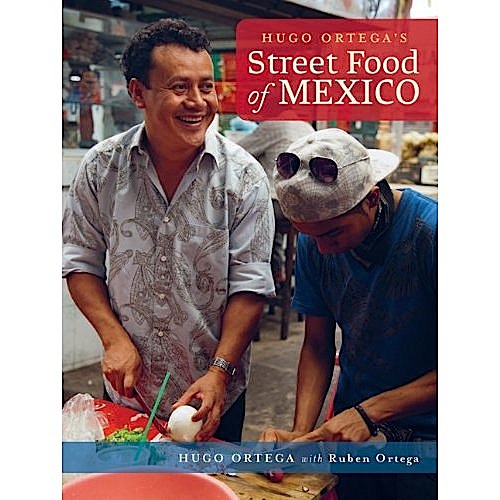 (Bright Sky Press,
$34.95)--For a decade now, Hugo Ortega has been
one of Houston's most dedicated interpreters of
Mexican cuisine, and here in this well-illustrated
book, he focuses in on those dishes that truly
reflect the regional diversity of the kind of food
Mexican eat on an everyday basis or when they want
to go for a snack. Street food is essential
to Mexico's food culture, and Ortega shows how so
much of it is lovingly prepared in kitchens then
brought to city streets the next morning,
tantalizing people with its aromas. Ortega himself
was born in Mexico City and sold such foods in the
mercado,
some prepared by his aunt. This knowledge and
these memories he brought to Houston and
now, with this delightful book, into the home
kitchens of Americans.
(Bright Sky Press,
$34.95)--For a decade now, Hugo Ortega has been
one of Houston's most dedicated interpreters of
Mexican cuisine, and here in this well-illustrated
book, he focuses in on those dishes that truly
reflect the regional diversity of the kind of food
Mexican eat on an everyday basis or when they want
to go for a snack. Street food is essential
to Mexico's food culture, and Ortega shows how so
much of it is lovingly prepared in kitchens then
brought to city streets the next morning,
tantalizing people with its aromas. Ortega himself
was born in Mexico City and sold such foods in the
mercado,
some prepared by his aunt. This knowledge and
these memories he brought to Houston and
now, with this delightful book, into the home
kitchens of Americans.
CookFight:
2 Cooks, 12 Challenges, 125 Recipes,
an
Epic Battle for
Kitchen Dominance
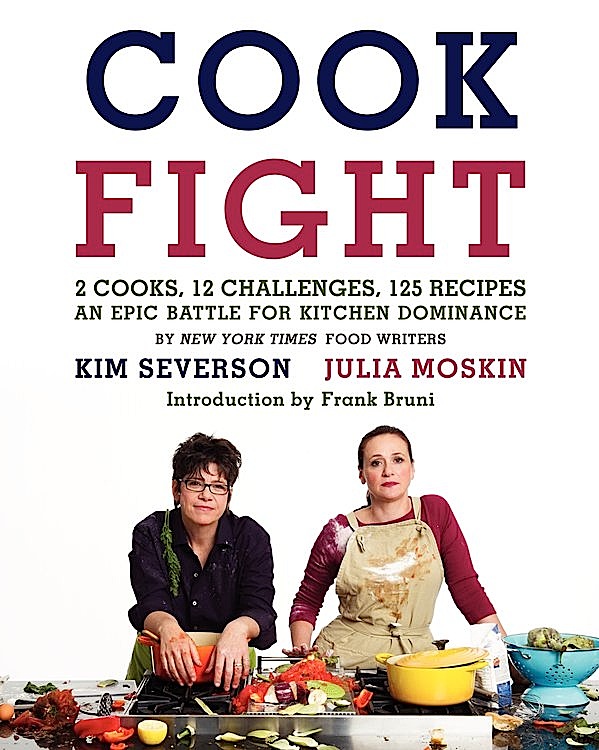 by Kim Severson and Julia Moskin
(Ecco, $29.99). What a cool idea: One NY Times food
writer, Frank Bruni, challenges two other NY Times food
writers, Severson and Moskin, to prepare
separately a dinner for six for just $50. The
results of those dinners, and many others
developed over a year is a story of intense
friendship, a lot of laughter, and not a few
arguments, making this much more than just a solid
cookbook of 125 ideas like salade Niçoise
sandwiches, scalloped tomatoes, "Refrigerator
Chicken," pork braised in milk and cream, and much
more. There is the comfort challenge, the
vegetarian challenge, the picnic challenge, the
bake-off and the Thanksgiving dinner, and it's
fascinating to see how two excellent home cooks
took such disparate approaches to these concepts.
"We dedicate this book to all the strong-willed
cooks who have come before us, fighting to their
last breath over whether there should be pork in
the meatballs or raisins in the stuffed cabbage,"
which are things definitely worth fighting for.
by Kim Severson and Julia Moskin
(Ecco, $29.99). What a cool idea: One NY Times food
writer, Frank Bruni, challenges two other NY Times food
writers, Severson and Moskin, to prepare
separately a dinner for six for just $50. The
results of those dinners, and many others
developed over a year is a story of intense
friendship, a lot of laughter, and not a few
arguments, making this much more than just a solid
cookbook of 125 ideas like salade Niçoise
sandwiches, scalloped tomatoes, "Refrigerator
Chicken," pork braised in milk and cream, and much
more. There is the comfort challenge, the
vegetarian challenge, the picnic challenge, the
bake-off and the Thanksgiving dinner, and it's
fascinating to see how two excellent home cooks
took such disparate approaches to these concepts.
"We dedicate this book to all the strong-willed
cooks who have come before us, fighting to their
last breath over whether there should be pork in
the meatballs or raisins in the stuffed cabbage,"
which are things definitely worth fighting for.
A Table at Le Cirque: Stories and Recipes from New York's Most Legendary Restaurant
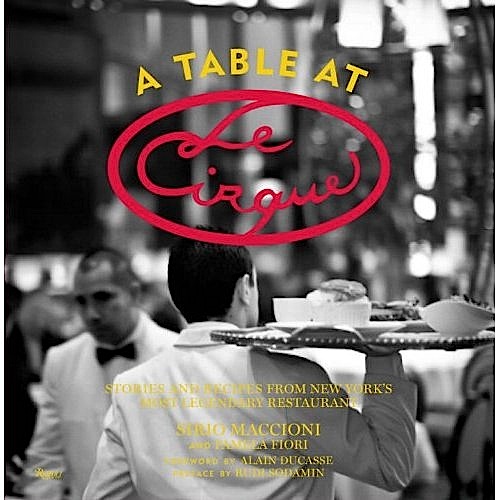
by Sirio Maccioni and Pamela Fiori (Rizzoli, $39.95). Even if this beautifully crafted book of NYC restaurant history didn't have such terrific recipes for classic recipes like cheese souffles, blacks bass in a sea salt crust, and Le Cirque's signature spaghetti primavera and crème brûlée, it should be required reading for anyone who has ever dined at Le Cirque or dreamt of doing so. Paterfamilias Sirio Maccioni, together with former editor-in-chief of Town & Country Pamela Fiori, has given us a reverie of glamor and unstinting, uncompromising dedication to excellence. Page through the first part of the book and you'll be dazzled and delighted by the photos and stories of how Sirio went from poverty during World War II to the pinnacle of NYC society. The photo of Sirio sprawled out on a table surrounded by some of the city's most beautiful models and achievers is a stunner. Here is Sirio sharing a wineglass with Danny Kaye; greeting Pope Jean-Paul II; Kirk Douglas and his sons seated at a table at Le Cirque; even Frank Zappa chilling out with Sirio after going out to buy a suit so he could meet the restaurant's dress code. What a gift book this would make for anyone loving the art of dining and the art of living well!
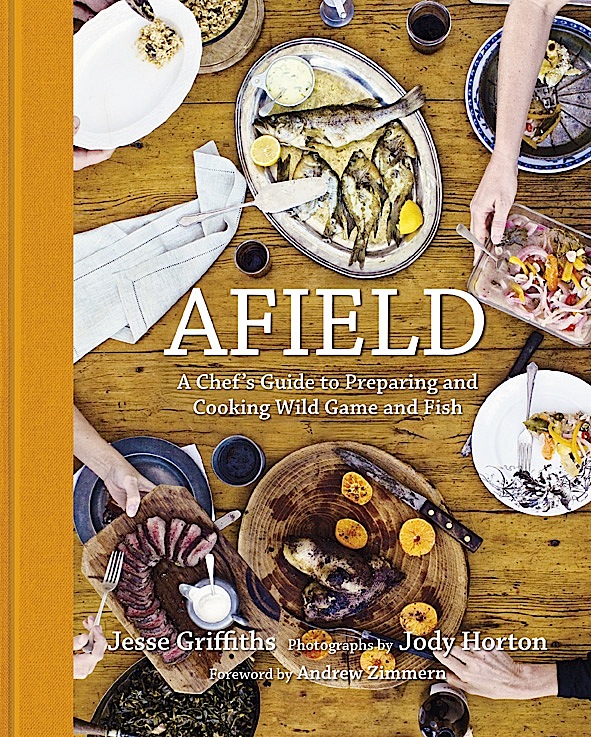
Afield:
A Chef's Guide to Preparing and Cooking Wild
Game and Fish
by Jesse Griffiths (Welcome Books,
$40). There is a surprisingly lack of good
books on cooking game--almost nothing in the last
ten years--so Jesse Griffith's compendium is way
overdue and wholly welcome. He is a fine writer
among many American outdoorsmen who seem to have
spent a lot of time in the field and on rivers
contemplating the hunting, catching and cooking of
Nature's bounty, and he reminds the reader that
hunting is a serious, arduous pursuit, as when he
writes of plucking doves, "Feathers coat
everything and will turn up for months to come,
like beach sand." But he is a canny guide to the
prep and cooking of what to most people is quite
foreign to their kitchen, and Jody Horton's
photographs are as clear and precise as if
Griffiths were at your side showing you how
to field dress a wild pig, gut fish at the
beach, or grill venison heart. Just in case you
need to.
The
Fundamental Techniques of Classic Italian
Cuisine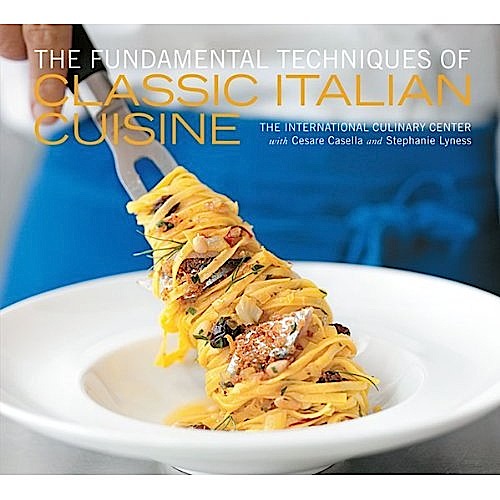
by Cesare Casella and Stephanie Lyness (
Stewart Tabori & Chang, $80). At this
price you expect a tome and an authoritative one
at that, and with Italian master chef and teacher
Cesare Casella of NYC's International Culinary
Center as your guide, everything is made very
simple for you, which is, after all the essence of
good Italian cooking. The instructions look
daunting, but that's because they are so thorough
that you won't make a mistake easily by following
them rigorously. I found the grissini quick
to make and delicious. There is also a lot
of interesting info here on everything from knives
to sanitation, as befits a textbook for culinary
students, but everyone will be happy finally to
have authoritative recipes for Italian classics
like pollo alla
cacciatora, vitello tomato, spaghetti alla
carbonara, and pasta con le sarde.
101 Classic Cookbooks: 501 Classic Recipes
Edited by Marvin J. Taylor and
Clark Wolf
(Rizzoli, $50). If anyone wants
to get a thorough sense of the 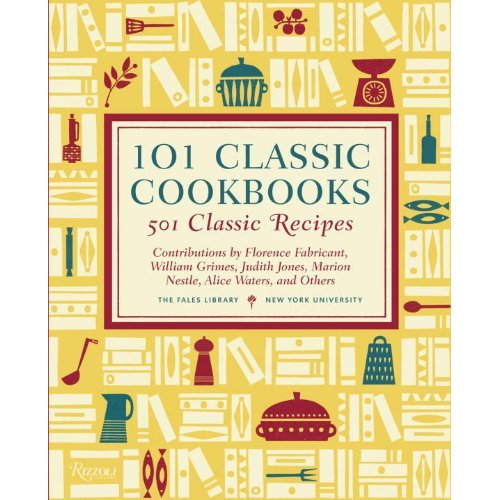 development
of American gastronomy over the last 150 years,
this is a book that will do it delectably, through
more a a hundred cookbooks ranging from Fannie
Farmer's seminal Boston Cooking School to The Joy of Cooking,
from Alice Waters to Edna Lewis, some with essays
by noted authorities like Jessica B. Harris,
Judith Jones, and Marion Nestle. The repros
of covers and pages from these cookbooks are
a delight and will be a nostalgic trip for so many
who bought these books when they were first
published. This is followed by a comprehensive 501
classic recipes that go from Tomato Catsup and
Thousand Island dressing to Cajun meatloaf and
Tennessee corn pone. It's a beautifully
put-together book, as is Rizzoli's style.
development
of American gastronomy over the last 150 years,
this is a book that will do it delectably, through
more a a hundred cookbooks ranging from Fannie
Farmer's seminal Boston Cooking School to The Joy of Cooking,
from Alice Waters to Edna Lewis, some with essays
by noted authorities like Jessica B. Harris,
Judith Jones, and Marion Nestle. The repros
of covers and pages from these cookbooks are
a delight and will be a nostalgic trip for so many
who bought these books when they were first
published. This is followed by a comprehensive 501
classic recipes that go from Tomato Catsup and
Thousand Island dressing to Cajun meatloaf and
Tennessee corn pone. It's a beautifully
put-together book, as is Rizzoli's style.
The
Latin Road Home: Savoring the Foods of
Ecuador, Spain, Cuba, Mexico and Peru
by Jose Garces ( Lake Isle Press,
$35). Immensely gifted both as a chef and
conceptualizer, Garces has established his
reputation with 15 restaurants nationwide to high
acclaim. In this heartfelt book, Garces
tells us of all that went into the making of his
culinary style, the Latin countries that show such
distinctions that have never really been displayed
before, at a time when too many chefs merely toss
in some South of the Border ingredients and call
it "Nueva Latino." This book is about the
best viejo
Latino, evident in dishes like quinoa chowder with
sweet corn from Ecuador, octopus with potato
confit from Barcelona, hearts of palm with coconut
vinaigrette from Cuba, and tortilla soup from Vera
Cruz.
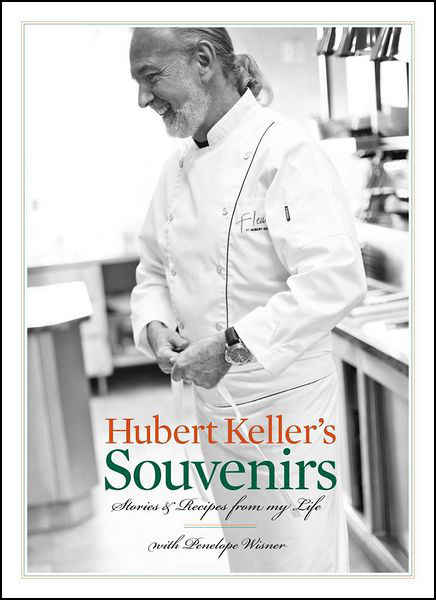 Hubert
Keller's Souvenirs by Hubert
Keller with Penelope Wisner (Andrews McMeel,
$50). One of the finest French chefs in
America, at his restaurants Fleur de Lys in
San Francisco and Las Vegas, Hubert Keller has
with this sumptuous book given other chefs
something to wonder at and learn from and
those interested in food and cooking as
culture a marvelous insight into the story and
shaping of a chef who began in Alsace and
trained with the best before settling in San
Francisco three decades ago. These
really are Keller's memoirs, and co-author
Penelope Wisner has distilled in the text the
gentle, generous, grateful personality that he
is. Many of the recipes can be daunting for
the home cook, but they show the care and
precision that still distinguishes French
cuisine in a way that is enduring and
important.
Hubert
Keller's Souvenirs by Hubert
Keller with Penelope Wisner (Andrews McMeel,
$50). One of the finest French chefs in
America, at his restaurants Fleur de Lys in
San Francisco and Las Vegas, Hubert Keller has
with this sumptuous book given other chefs
something to wonder at and learn from and
those interested in food and cooking as
culture a marvelous insight into the story and
shaping of a chef who began in Alsace and
trained with the best before settling in San
Francisco three decades ago. These
really are Keller's memoirs, and co-author
Penelope Wisner has distilled in the text the
gentle, generous, grateful personality that he
is. Many of the recipes can be daunting for
the home cook, but they show the care and
precision that still distinguishes French
cuisine in a way that is enduring and
important.
Mac
& Cheese by Ellen Brown (Running
Press, $20). One-subject cookbooks don't
often rise to the level of indispensability  that Ellen Brown's newest book, with
80 classic and creative versions of the Ultimate
Comfort Food," does with such exuberant style.
When you think of it, macaroni and cheese is
really an internationally beloved dish, not just
the church supper cliché of American
cookery. There are soufflés here,
canapés, even desserts from around the
world and from some of the best chefs in America,
which includes Brown herself.. This is that
rare book wherein I truly wanted to make every
recipe in it, right now.
that Ellen Brown's newest book, with
80 classic and creative versions of the Ultimate
Comfort Food," does with such exuberant style.
When you think of it, macaroni and cheese is
really an internationally beloved dish, not just
the church supper cliché of American
cookery. There are soufflés here,
canapés, even desserts from around the
world and from some of the best chefs in America,
which includes Brown herself.. This is that
rare book wherein I truly wanted to make every
recipe in it, right now.
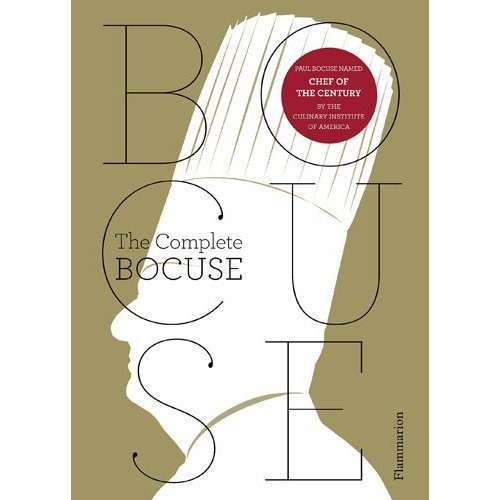 The Complete Bocuse
by Paul Bocuse (Flammarion, $49.95)--Given its
weight, you could work off a few pounds of the
food within by pumping the book 100 times.
It's a behemoth, and in this case, unlike those by
or about 30-year-old chefs, 754 pages and 500
recipes seem completely apt to take in the
longlived career of one of the greatest chefs of
the past century. Bocuse was there at the
beginning of la
nouvelle cuisine, though never at its
extremes, and this book proves, page after page,
that classic French dishes like veal kidneys with
rice pilaf and rhubarb tart underpin all the
creative strides Bocuse made by in the 1970s
with dishes like carp and eel stewed in red wine
and berry-stuffed mutton shoulder. Of
course, it includes his signature pot-roasted
chicken. But unlike so many chefs' books
written for chefs, there is little in this
sumptuous volume that could not easily be made by
a good home cook. The recipes are clear, few
are complex, and all look delicious. Bocuse
himself once told me, "If cooks would eat their
own food, there would be better cuisine.
When you lift the lid off the pot and you breathe
in the aroma, that is the essence of good
cuisine." That's what you feel when
you open the pages of this wonderful book.
The Complete Bocuse
by Paul Bocuse (Flammarion, $49.95)--Given its
weight, you could work off a few pounds of the
food within by pumping the book 100 times.
It's a behemoth, and in this case, unlike those by
or about 30-year-old chefs, 754 pages and 500
recipes seem completely apt to take in the
longlived career of one of the greatest chefs of
the past century. Bocuse was there at the
beginning of la
nouvelle cuisine, though never at its
extremes, and this book proves, page after page,
that classic French dishes like veal kidneys with
rice pilaf and rhubarb tart underpin all the
creative strides Bocuse made by in the 1970s
with dishes like carp and eel stewed in red wine
and berry-stuffed mutton shoulder. Of
course, it includes his signature pot-roasted
chicken. But unlike so many chefs' books
written for chefs, there is little in this
sumptuous volume that could not easily be made by
a good home cook. The recipes are clear, few
are complex, and all look delicious. Bocuse
himself once told me, "If cooks would eat their
own food, there would be better cuisine.
When you lift the lid off the pot and you breathe
in the aroma, that is the essence of good
cuisine." That's what you feel when
you open the pages of this wonderful book.
❖❖❖
NEW YORK CORNER
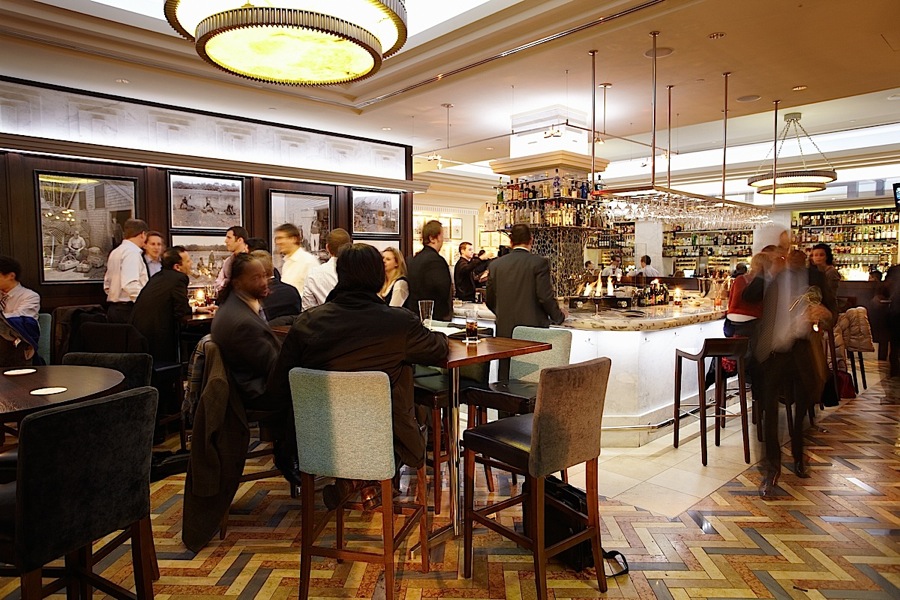 OCEANA
OCEANA120 West 49th Street (near Avenue of the Americas)
212-759-5941
oceanarestaurant.com
Hard to
believe Oceana has been around for two decades, three
years in its current location across from Rockefeller
Center. So,
while some recent renovations have taken place to the
café area (left)
for drinks, oysters, and small plates, the
restaurant’s 150-seat main dining room (below) has
maintained its size, brightness, and vitality
throughout, with polished cherry wood, piscine
artwork, and a beautiful glass-enclosed private dining
space in the middle of the room. (I still don’t
understand why some tables have linens and others do
not.)
Oceana is another of the Livanos
family of restaurants, with managing partner Paul
McLaughlin. (Two weeks I wrote about their Greek
restaurant Molyvos.) Oceana’s Executive Chef,
Ben Pollinger, proved from the first that he is a
supreme master of seafood, and I count him along with
Eric Ripert of Le Bernardin, as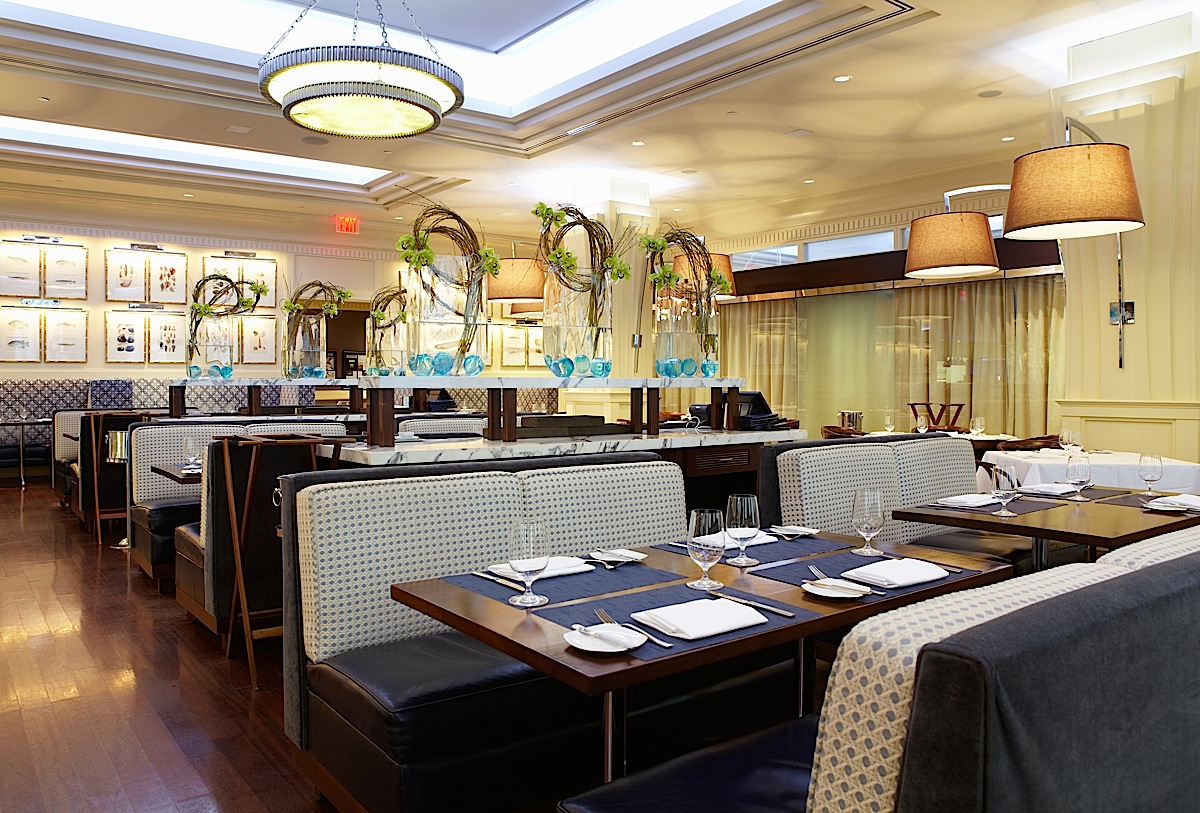 one of NYC’s
treasures in this genre.
one of NYC’s
treasures in this genre.
The occasion of my son's
girlfriend's birthday was reason to pay a visit to
Oceana, and, as always with a Livanos restaurant, we
were warmly greeted. Wine director
Pedro Goncalves has expanded the list at Oceana to
more than 850 selections, with 30 wines by the
glass. He is a man to consult on what's new and
interesting.
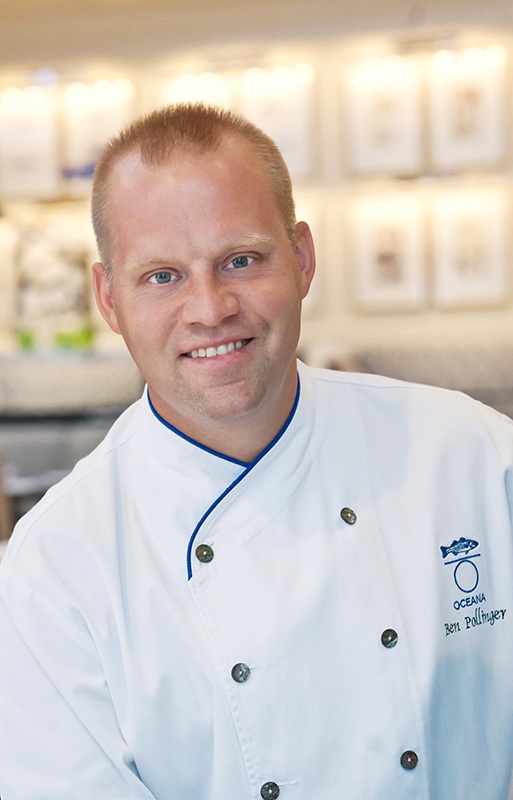 We put
ourselves in Pollinger's hands for the menu, asking
him only not to serve us all the same dishes, which
meant we had a chance to go through a panoply of
what's seasonal here. We began, therefore, with
smoked sablefish tangy with lemon, a touch of sour
cream, and confit of potato. Orange-chile-glazed
kama (the
collar of hamachi)
came with green papaya, salad, and peanuts, a dish
that might have sprung from Polynesia, while shrimp
and pumpkin risotto with sage and mascarpone might
have come from an autumnal table in Umbria.
Broiled Atlantic tripletail is a delicious fish,
here a bit overpowered by braised greens, shallots,
jalapeño, with gnocchi and parmigiano.
We put
ourselves in Pollinger's hands for the menu, asking
him only not to serve us all the same dishes, which
meant we had a chance to go through a panoply of
what's seasonal here. We began, therefore, with
smoked sablefish tangy with lemon, a touch of sour
cream, and confit of potato. Orange-chile-glazed
kama (the
collar of hamachi)
came with green papaya, salad, and peanuts, a dish
that might have sprung from Polynesia, while shrimp
and pumpkin risotto with sage and mascarpone might
have come from an autumnal table in Umbria.
Broiled Atlantic tripletail is a delicious fish,
here a bit overpowered by braised greens, shallots,
jalapeño, with gnocchi and parmigiano.
A lustrous black sea bass tartare
came with the delightfully unexpected addition of
plums, walnuts, and chicarones,
while the marriage of BBQ short ribs and chimichurri
swordfish with crispy grits and kale was a dish you'd
only find in the best restaurants in the South right
now, thereby showing off the extraordinary range of
Oceana's kitchen. There was also a Cape Cod scallop
seviche with blood orange and shishito peppers,
and sea scallops cooked on the griddle with seared
pumpkin, Swiss chard, and a lovely saffron-fennel
reduction. Quite a surprise was Pollinger's
rendering of General Tsao's chicken, pretty close to
those standard items you'd find in most Chinese
restaurants in America but done with far more finesse,
emphasizing the balance of sweet-and-sour with
scallions, cashews and forbidden rice that gave its
own taste and texture to the dish.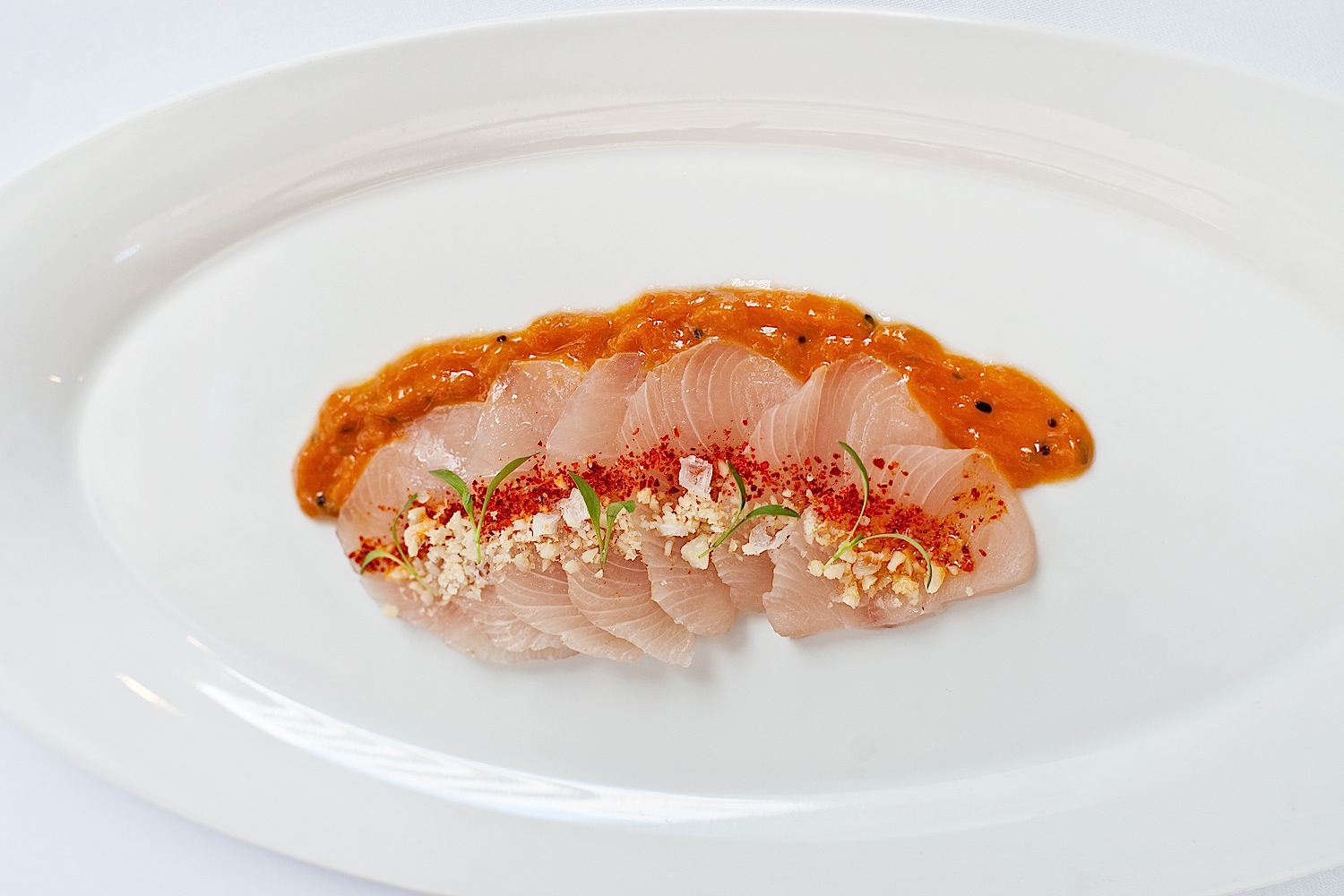
Oceana has a very good
cheese selection, so we enjoyed an Alpine variety and
one called "Across the Pond," both from NY State, and
four fine examples from Vermont, served with spiced
pecans, fruit, honey and cabernet bread.
There's no slouching with desserts at Oceana, which
included an olive oil almond cheesecake with
watermelon granita
and tarragon sorbet that somehow worked under all
those out-of-the-ordinary savory ingredients; a lush
pumpkin tres leches
with hazelnut sable and vanilla lime sorbet; a
chocolate Kadota fig parfait with almond dacquoise; and a
chocolate custard brownie with roast cinnamon ice
cream and espresso granita,
which has got to be the best dessert I've had this
fall.
Ever in search of the new,
even odd foodie haunt in NYC, many people deny
themselves the pleasures of restaurants that have been
established for so many years obviously because they
are consistent and they are always very good.
Such a restaurant might be a traditional
steakhouse that just puts out great beef and chops or
an Italian place that hasn't changed its menu in
decades. But at Oceana--and its full house crowd
most nights proves it--is a place people come to see
for what is the finest in seafood, done with panache,
not by rote. After twenty plus years, Oceana is
one of NYC's classics and in that regard sets the
standard for so many in a city ravenous for the new
and novel.
Oceana is
open for Lunch Mon.-Fri., dinner nightly; Dinner
appetizers $12-19, Dinner Entrées: $28-48,
Bar Menu: $9-19.
❖❖❖
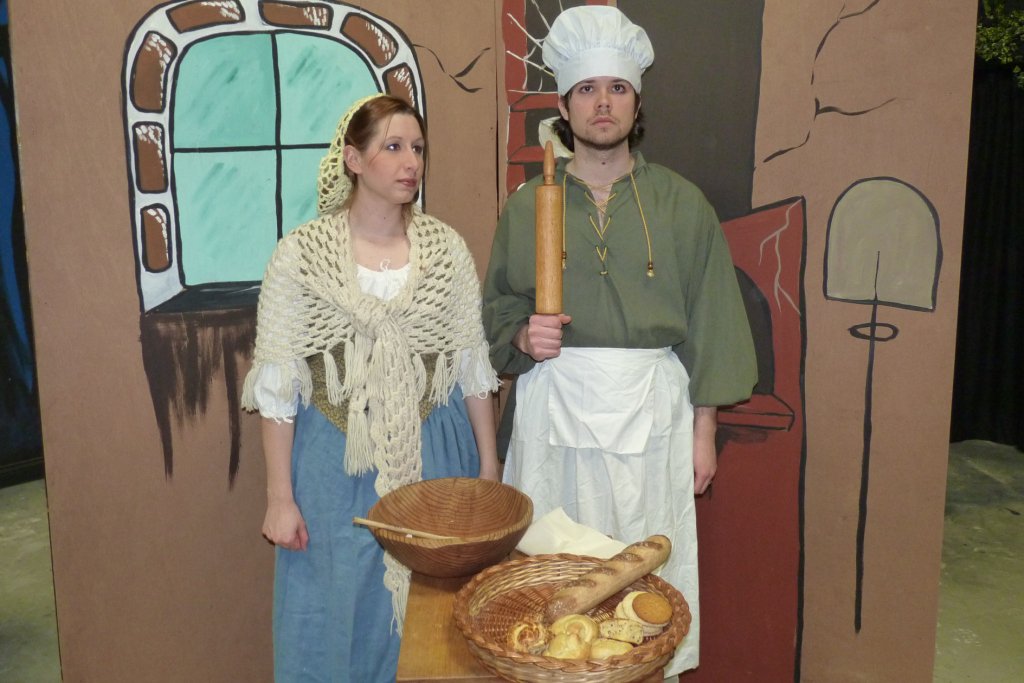
REPORTS
ON
WHAT MAKES
FLOUR INTERESTING THAT
WE NEVER FINISHED READING
ALL FOOD THAT
NIGHT VERY VERY EXTRA CRISPY!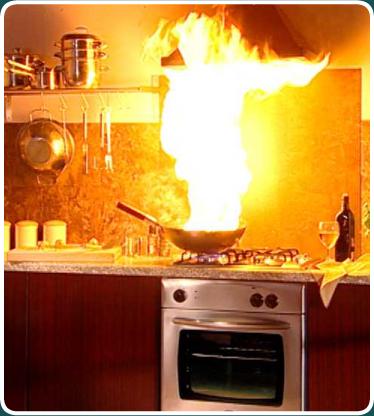
In NYC, a sushi chef
at Eno Asian Bistro and Lounge was arrested
after a kitchen fire started in two containers
labeled soy sauce which he'd used to store
gasoline.
❖❖❖
Any of John Mariani's
books below may be ordered from amazon.com.
 |
My latest book, which just won the prize for best book from International Gourmand, written with Jim Heimann and Steven Heller, Menu Design in America, 1850-1985 (Taschen Books), has just appeared, with nearly 1,000 beautiful, historic, hilarious, sometimes shocking menus dating back to before the Civil War and going through the Gilded Age, the Jazz Age, the Depression, the nightclub era of the 1930s and 1940s, the Space Age era, and the age when menus were a form of advertising in innovative explosions of color and modern design. The book is a chronicle of changing tastes and mores and says as much about America as about its food and drink.
“Luxuriating vicariously in the pleasures of this book. . . you can’t help but become hungry. . .for the food of course, but also for something more: the bygone days of our country’s splendidly rich and complex past. Epicureans of both good food and artful design will do well to make it their coffee table’s main course.”—Chip Kidd, Wall Street Journal.
“[The menus] reflect the amazing craftsmanship that many restaurants applied to their bills of fare, and suggest that today’s restaurateurs could learn a lot from their predecessors.”—Rebecca Marx, The Village Voice. |
"Eating Italian will never be the same after reading John Mariani's entertaining and savory gastronomical history of the cuisine of Italy and how it won over appetites worldwide. . . . This book is such a tasteful narrative that it will literally make you hungry for Italian food and arouse your appetite for gastronomical history."--Don Oldenburg, USA Today. "Italian
restaurants--some good, some glitzy--far
outnumber their French rivals. Many of
these establishments are zestfully described
in How Italian Food Conquered the World, an
entertaining and fact-filled chronicle by
food-and-wine correspondent John F.
Mariani."--Aram Bakshian Jr., Wall Street
Journal.
"Equal parts
history, sociology, gastronomy, and just
plain fun, How Italian Food Conquered the
World tells the captivating and delicious
story of the (let's face it) everybody's
favorite cuisine with clarity, verve and
more than one surprise."--Colman Andrews,
editorial director of The Daily
Meal.com. "A fantastic and fascinating
read, covering everything from the influence
of Venice's spice trade to the impact of
Italian immigrants in America and the
evolution of alta cucina. This book will
serve as a terrific resource to anyone
interested in the real story of Italian
food."--Mary Ann Esposito, host of PBS-TV's
Ciao
Italia. "John Mariani has written the
definitive history of how Italians won their
way into our hearts, minds, and
stomachs. It's a story of pleasure over
pomp and taste over technique."--Danny Meyer,
owner of NYC restaurants Union Square Cafe,
Gotham Bar & Grill, The Modern, and
Maialino.
|
 |
 |
 |
 |
 |
 |
 |
 |
 Everett Potter's Travel Report:
Everett Potter's Travel Report: 
 Eating Las Vegas
is the new on-line site for Virtual Gourmet
contributor John A. Curtas., who since 1995
has been commenting on the Las Vegas food
scene and reviewing restaurants for Nevada
Public Radio. He is also the
restaurant critic for KLAS TV, Channel 8 in
Las Vegas, and his past reviews can be
accessed at KNPR.org.
Click on the logo below to go directly to
his site.
Eating Las Vegas
is the new on-line site for Virtual Gourmet
contributor John A. Curtas., who since 1995
has been commenting on the Las Vegas food
scene and reviewing restaurants for Nevada
Public Radio. He is also the
restaurant critic for KLAS TV, Channel 8 in
Las Vegas, and his past reviews can be
accessed at KNPR.org.
Click on the logo below to go directly to
his site.
www.EatingLV.com

Tennis Resorts Online: A Critical Guide to the World's Best Tennis Resorts and Tennis Camps, published by ROGER COX, who has spent more than two decades writing about tennis travel, including a 17-year stretch for Tennis magazine. He has also written for Arthur Frommer's Budget Travel, New York Magazine, Travel & Leisure, Esquire, Money, USTA Magazine, Men's Journal, and The Robb Report. He has authored two books-The World's Best Tennis Vacations (Stephen Greene Press/Viking Penguin, 1990) and The Best Places to Stay in the Rockies (Houghton Mifflin, 1992 & 1994), and the Melbourne (Australia) chapter to the Wall Street Journal Business Guide to Cities of the Pacific Rim (Fodor's Travel Guides, 1991).


MARIANI'S VIRTUAL GOURMET
NEWSLETTER is published weekly. Editor/Publisher: John
Mariani.
Contributing Writers: Christopher Mariani, Robert Mariani,
John A. Curtas, Edward Brivio, Mort Hochstein,
Suzanne Wright, and Brian Freedman. Contributing
Photographers: Galina Stepanoff-Dargery,
Bobby Pirillo. Technical Advisor: Gerry McLoughlin.
© copyright John Mariani 2012
